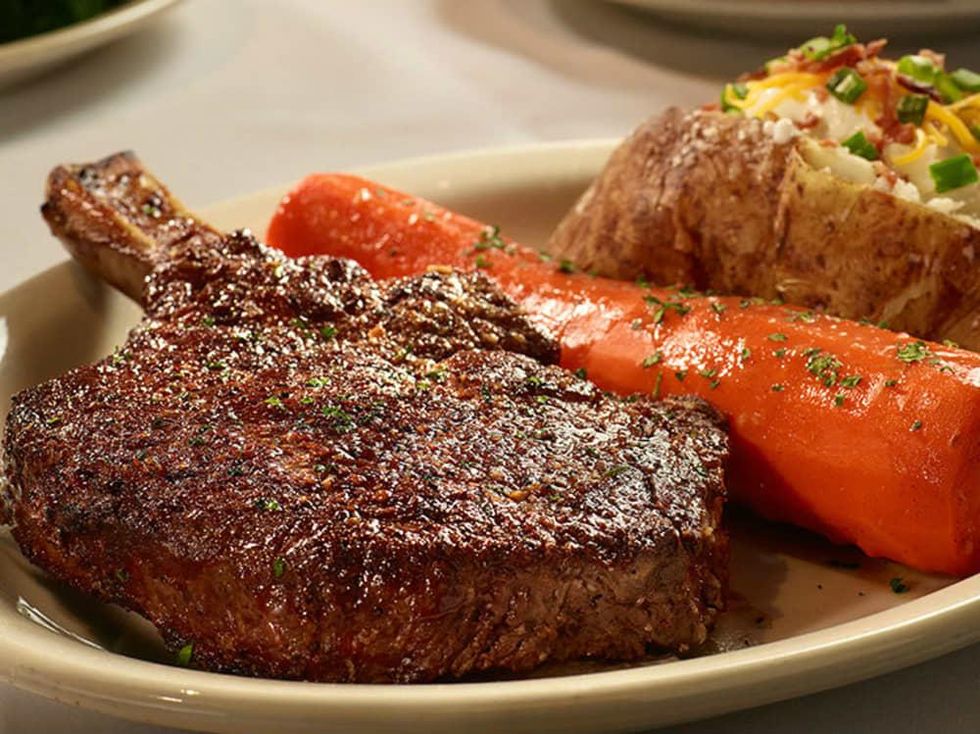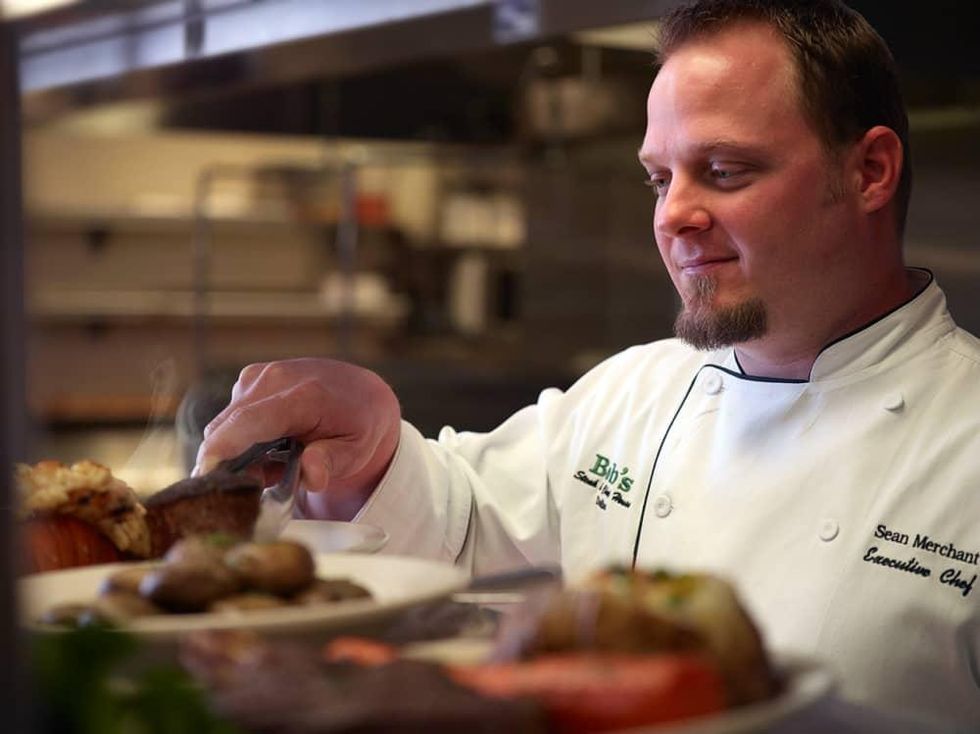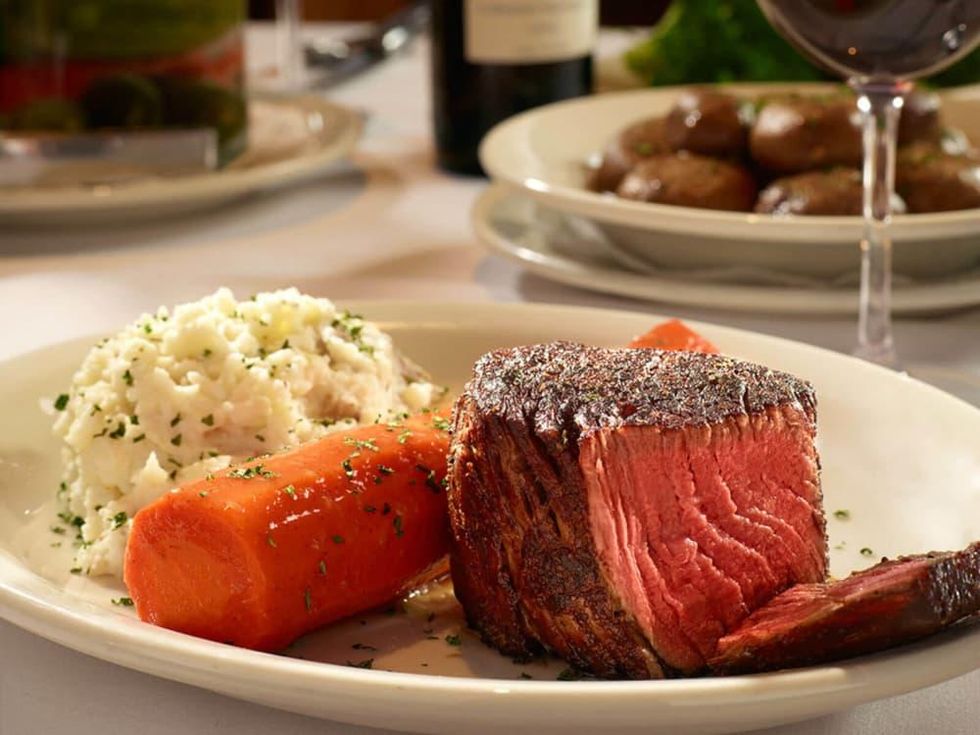Steak 101
Let this expert Texas chef teach you how to order the perfect steak
When you go to Bob's Steak & Chop House for a delicious dinner, there's really no way you can go wrong. But you could order a steak that's perhaps not the cut or temperature you were expecting, especially if you haven't brushed up on the basics of beef.
That's where Chef Sean Merchant comes in. The corporate executive chef at Bob's Steak & Chop House is ready to teach you Steak 101, from why prime is so special to what "medium rare" really means in the kitchen. And once you've digested this primer, go forth and order steak with confidence — and some mac and cheese.
What is Prime steak?
USDA Prime means that the meat is designated in the top 2 percent of all beef. It's derived from young beef and has the highest degree of fat marbling, which results in amazing tenderness, juiciness, flavor, and texture. At Bob's all the steaks are prime, including the famous prime filet, a cut that's rarely found in most steakhouses.
"Most will say they are a prime steakhouse, but the filet is the one cut they serve that usually isn't," says Merchant. "There’s a big difference between choice and prime, mainly in the marbling and richer flavors you get with the latter. It delivers that 'melt in your mouth' sensation."
Different Cuts
The taste and texture of your steak depends on where the meat is cut from. Bones and fat produce more flavor as the steak cooks, but the leaner filet cut is often the most popular with diners. The four most common cuts are below, in order of leanest to most marbled.
- Filet: Boneless and compact, with most or all extra fat trimmed away. Chef Merchant cautions cooking above medium rare-plus, because starting at medium the steak can become "too grainy." Medium rare is just right, when the marbling and fats have just started to break down. Want yours rare? Go for it. This cut doesn't need the heat as much as others.
- Strip: Whether a Kansas City bone-in strip or a New York boneless strip, expect a strip of fat to run along one side. There will be some marbling, but no fat pockets. The filet cooking recommendations hold for this cut as well, and rare is still an acceptable choice.
- T-Bone: Also known as a porterhouse, this cut is served with — you guessed it — the bone intact. On one side sits the filet, while the other holds the New York strip. Many praise this cut as "the best of both worlds."
- Ribeye: Served bone-in or boneless, this cote de beouf (which translates literally to "beef rib") is cut from the upper ribs. Expect a lot of marbling and fat pockets throughout. Chef Merchant recommends ordering medium rare-plus and warmer, but that it's best cooked medium because "the fats have broken down more for a better mouthfeel."
Ok, so what is "medium rare-plus?"
Even if you often grill steaks at home, your definition of medium may not be the same as the chef's due to the quality of beef and cooking techniques. Bob’s also lets its steaks rest before serving, which helps create the juiciness and tenderness that Bob’s is known for. Use these color-coded shortcuts to ensure you're thrilled when you cut into your steak.
- Rare: A ruby-red but cool center.
- Medium rare: Ruby-red throughout, but warm.
- Medium rare-plus: Medium pink with a small amount of ruby.
- Medium: Light pink with just a touch of ruby.
- Medium well: A thin line of light pink throughout.
- Well done: Cooked all the way through, no pink whatsoever.
"It's common for people to come to a steakhouse and want to order 'the best steak,'" says Merchant. "There is no such thing. Everyone’s 'best steak' is different; it’s all about what you normally enjoy. At Bob's you'll get the prime version of your favorite steak cooked exactly how you like it, and we know you will be hooked."


